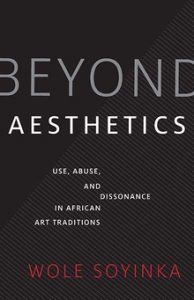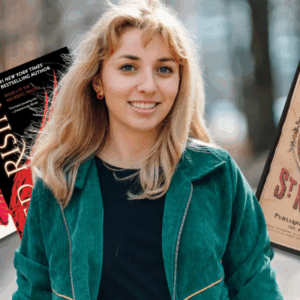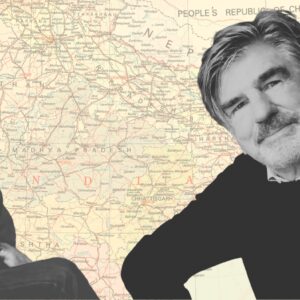
Wole Soyinka on Yoruba Weddings, Nigerian Movies, and Making Traditions New
The Danger of Naming Art Before It Has Been Made
I once hallucinated at a Heathrow Airport hotel—the Sofitel—the consequence of a flight cancellation that imposed an unscheduled 24-hour layover. Nothing for it but to chafe at the delay and submit myself to my slave driver, commonly known as the laptop. I hadn’t meant to stay so long at it—just a few hours, I thought—but it turned out to be one of those driven sessions that went on nearly the whole day. When I broke off, I was feeling quite drained. So, time for a recuperative stroll, a drink, perhaps take the train to London—or whatever.
I stepped out of my room into the familiar, long corridors and its geometric, functionally sparse architecture, turned a corner, and—I was hit by an explosion of colors! Instinctively I ducked back and raced to my room—just to get my bearings, as I wasn’t sure where I was, what day it was, in short, even who I was. The possibility that I was dead actually occurred to me very briefly and, frankly, the sensation wasn’t all that bad.
What had slammed across my sight lines in that brief step into the right-angled corridor was this: goddesses in multicolored, chiffony attires had taken over the space, intersecting and floating up and down the seemingly suspended corridor. Some were grouped around the lifts—elevators to some—entering and exiting and swirling up all over the adjacent stairways. The air had taken on an unaccustomed flavor. Clouds of incense and multitextured smells assailed my nostrils.
I checked my surroundings—there was my suitcase, the coagulated remains of the Nespresso cup, my laptop that I had just abandoned. I looked out of the window—all familiar sights. So, I girded my loins, readied myself, and stepped out again. If goddesses had taken over, then Ogun’s man was prepared to take them on!
When I arrived at that decision corner, lo and behold, they had all vanished. I had been away from that first sighting for no more than ten minutes—where had they all gone? So, I walked slowly to the area where I had sighted them—around the lifts and stairs. Then I heard sounds—it was clear, they had been clustering to descend. Sure enough, when I arrived at the lifts and looked over the railing to the floor below, there they all were, milling around in their saris, chatting in subdued voices.
The landing below plus an open space had been turned into a reception room—a wedding, of course! The scene below looked as if a rainbow had fragmented and its pieces had glided down below. Seated at one end of the room, presiding over the proceedings, was a Hindu god I easily recognized—Ganesha of the elephant head. At last I could breathe normally.
At home, a wedding without aso-ebi—the selected festive attire—is simply unthinkable.
The regular hotel clientele stood at discreet distances, sat at the bar, entranced, all travel boredom and weariness evidently forgotten. It was just the break I needed, an unintended fillip to my flagging energy. I remained on the hanging corridor and indulged in a panoramic, bird’s-eye view of the ceremony for about 30 minutes and then, suitably energized, returned to my room and my taskmaster.
This hardly needs observing, but perhaps we should state it anyway, just to make sure it is not missed. It has nothing to do with whether one embraces or rejects the mythology from which a cultural practice has stemmed. If that were the case, millions from diverse religions and races would not flock to admire shrines to the Japanese Shinto gods, the massive statues of Buddha and his temples, Notre Dame, or the horizon of minarets that crown the Muslim landscape from Marrakesh to Chechnya and even Italy, home of the Roman Catholic Vatican. We do not have to be partisans of the extravagant geography of love to admire the Taj Mahal any more than turn Irish to partake of the feast of St. Patrick that turns even fountains green in the United States.
Then I had a good laugh at myself—two, as a matter of fact. One, of course, to have actually believed I was hallucinating, but that was understandable. The second laugh had a history. Of course, I had witnessed, even participated in, such scenes! At home, a wedding without aso-ebi—the selected festive attire—is simply unthinkable. But they used to irritate me no end. Both event and attire too ostentatious most of the time, I feel, so my temperament instinctively recoils from such assemblage, especially as it runs rampant on the feet of expensiveness.
Many use it—ironically—as an instrument of exclusion. They ensure that they select material whose price is beyond what they consider the means or class situation of the unwanted—etc., etc. Weddings now even employ makeup specialists, sometimes flown in when the event is outside the national borders. There is no question regarding their expertise—they are truly professional—but by the time they are finished, all the faces look virtually the same, the favorite target appearing to be a Japanese mask. What that signifies, I do not really know, but perhaps one should find it bothersome. If the basic motif is the geisha look, then my wife has attended her last wedding event!
Seriously, though, a subtle problematique is being inserted into the arena of human adornment on the Nigerian scene, which is truly fascinating and complicated. It is gratifying because the women evidently raise some serious questions about what it means to be feminine—how to be feminine without, however, losing ground to male dictation.
Iya mi osoronga is all very well, they seem to say; Mr. W. S. may pontificate all he wants about female power exercised through the gelede, the Earth-Mother masquerade of the Yoruba; external pressure movements may turn patronizing over what they consider a female absolute—to be feminist. But what is undeniable is that the Yoruba woman has chosen how to empower herself, selecting and creating from internal options, within her own community of self-conscious females.
Among the Yoruba, the basic principle is to reduce difference and individuation to the barest minimum, that minimum being most conspicuously in the style of the head wrap.
And there is justification for this in the phenomenal rise of women in all social directions—entrepreneurship, the arts (including the performance arts), politics (including powerful positions in governance), even in that specialized, yet prevalent discipline and business known as corruption! It is quite a quantum leap, to consider how many top-notch professional women have one leg dangling over the prison gates at home. The aso-ebi—and especially the gele, head wrap, explosion—brought up these musings, I suspect.
Before we depart from the subject, let it be retained in our minds that the aso-ebi, which means, literally, family or relations attire, is really a bonding mechanism built around a social aesthetic plinth. It signifies that not merely the family or the “extended family,” but rather the entire community, is declaring on that day—and through activities that lead up to the prime day—that they are all one of the same family, the family of the celebrant.
And for that reason, the women—and men also in increasing numbers—ask in advance for their apportionment of the material that will be worn by the immediate celebrants. They contribute to a common purse, which reduces costs, and turn up on the day in uniform regalia. Aso-ebi is uniquely Yoruba but is increasingly copied by other ethnic groups. In this department of dressing up for an occasion, there is an obvious contrast between cultures, especially among women.
Farcical to violent scenes are stock in European and American films, where two women meet at a function and one or both burst into tears—or turn around and dash back home—because they are wearing identical dresses. I confess I couldn’t tell whether the Indian wedding party at Sofitel was propelled more by differences than identicality—in my condition, all the saris blended together, multicolored, multitextured, but united by the distinctive sari design and its physical transformation of the body.
Among the Yoruba, the basic principle is to reduce difference and individuation to the barest minimum, that minimum being most conspicuously in the style of the head wrap, sash, or iborun—the over-the-shoulder shawl. Same material, different styles. This, incredibly, has given rise to one of the most remarkable innovations seen in Nigerian fashion in recent years, spearheaded by a multimedia artist and batik maker, Nike Okundayo.
I suspect that she invents a new style every day—indeed, there is no question that she has created a totally new aesthetic. I have peeped in at her workshop occasionally and actually been present at some of her headgear parades—privately tagged the Gele Gala in my mind. What can be done with a piece of tissue is simply astounding: the intricacies of winding are a study in fabric contortions and finger control.
She has done demonstrations in Europe and the Caribbean. This is one of those undeniable instances of the evolution of a virtually new organism from a tradition and, as usual, one that can be turned into a reinforcement of positive social traditional usage or the opposite—ostentation and garishness. Even the negative propensities would still qualify for an aesthetic, however, but a distinctly Nigerian, exhibitionist, even gaudily class-conscious aesthetic, pretentious one.
It is that latter option on which the N****wood film industry has largely fastened, though, of course, there are uplifting exceptions. Indeed a totally new generation is fast abandoning what, in the United States, for instance, used to be known as Blaxploitation. Tradition, for many of the enthusiasts, has meant virtually the equivalent of the Hollywood mumbo jumbo that passed for the image of African traditional healers, all feathers and leather strips, gourd rattling, and clumsy special effects used lavishly, often without rhyme or reason, the conflation of what I described before as simply cultic demonism, with no shred of the sacred in what are supposed to be solemn rituals.
But then, as we say in Yoruba, Won ni amukun, eru ori re wo. O ni, at’isale ni (They tell the knock-kneed: the load on your head is skewed. He replies, no, the imbalance began at the base). Point: don’t expect a straight shoot if the root itself is crookedly earthed. Let the N-word phenomenon serve as a lesson on the neglect of some basic traditional principles that are pertinent to the creative process.
In revealing himself a dyslexic, the American writer Richard Ford qualifies this by explaining that he actually sees words as images. No, I wouldn’t make such a far-out claim for myself. However, I do subscribe to the view that words have shapes, which are in turn evocative of more than the mere sound of them or their literal meaning. Indeed, one can claim that some images become eventually attached to words with such intimacy that they can no longer be prised apart— hmm, I appear to be getting closer and closer to Richard Ford’s position.
All right, let us simply try and sum it up thus: the power of suggestion goes beyond mere suggestion. A word can distort the palpable reality that one’s own senses have already determined. Where such a word is deployed as sum or part of values, as a category of phenomena, even as a loose umbrella for a family of products or objects, it can distort other entities under that very umbrella completely, influencing their seizure in our minds in unintended directions. Where we are concerned with creative activity, the word can contract the scope, or reduce the quality within the overall undertaking.
In short, a verbal choice can inhibit or expand imagination. It can foreclose adventurousness through association, narrow our scope of creative choices, even without our being conscious of a restrictive manipulation. Thus it is with naming—be this of humans, objects, or relationships. Let us extend our illustration beyond the Yoruba—it conveniently happens that recently, I was invited to contribute to events to mark the 450th anniversary of William Shakespeare’s birth. N****wood unquestionably on my mind, I chose to address this very issue of names in my contribution. I shall proceed to paraphrase my observations on the Yoruba culture of naming, with Shakespearean parallels.
The Yoruba happens to be one of those cultures where a child’s “naming” is more than simply according a new, yet amorphous entity a convenient handle for reference and identification.
Maybe that is why a lot of thought goes into this process in such societies, why perhaps they indulge in extravagant child-naming rituals—with feasting, dancing, even ancestral masquerades. Not just the parents, but the extended family, sometimes the entire community, is implicated in such an event, at which close members may donate their own naming preferences.
Thereafter they continue to apply that choice—directly or indirectly—in relating to the offspring. Finally, let us again note that both family and communal histories are recalled through the act of naming, and implications and/or expectations for the future influence of such choices.
Extravagant claims embedded in a name are a clear giveaway of a community that perhaps loves to show off, most especially in denoting pedigree, while a mousy choice indicates a posture of self-effacement, bordering on timidity, or perhaps a prayer for the child’s tranquil future—and so on and on. Naming—to some degree—reveals even more the nature and aspirations of the name-givers than prayers or predictions for the docile entity, and may be regarded an embedded social agenda.
“Remember what name you bear” is one of the commonest admonitions from parent, relations, or total outsiders. Conversely, dare lay claim to a name, pedigree, or title to which you are not entitled— no pun intended—and society ferrets you out, strips you of your borrowed feathers, and ostracizes you for identity theft.
Naming—to some degree—reveals even more the nature and aspirations of the name-givers than prayers or predictions for the docile entity.
In the home of the Yoruba, tonal exploitation is only to be expected, but the same naming sensibilities apply even to the nontonal languages. For instance, let us quickly invoke the choices of the master himself, William Shakespeare, appropriately led off by his play on the tropical idyll of magic, power intrigues, loss, and restitution. Trinculo of The Tempest does not have what we would call a “serious” name, and his role in that play more than fits the name he bears.
By contrast, in a totally different environment and variation on that same theme of power, Coriolanus—Caius Marcius Coriolanus, in full—is one name with a martial, authoritative ring. Back to Africa, in Antony and Cleopatra the name Enobarbus is a curious case—but then some of these responses are undoubtedly subjective. I find, for instance, that the name Enobarbus conjures up the figure of a hirsute warrior and matchless carouser, whereas Shakespeare depicts him as a voice of rationality with a poetic heart. Hotspur (Henry IV, Part I) is unambiguous—don’t ever cross him in a quarrel!
Browsing through the cast list of villainy, we encounter the likes of Malvolio, which requires no further commentary. Goneril (King Lear) is in an implacable class of her own—which compensates for the name-shy Lady Macbeth, Shakespeare’s summative treatise on the gender-free absolutism of evil ambition. Caliban is certainly one of the most trenchant names, especially for those of us from a continent that European lore has decreed the home of black medieval bestiary and unnatural dietary habits!
But now, N***wood?!!!
Let it be understood that we are not necessarily speaking of originality—neither in naming, nor in the works begotten (or misbegotten)—even in a tangentially affective way by the naming. I have read critiques of artistic works that appear to make originality the benchmark of creativity, blithely dismissing one product or the other on the grounds that it is not “original.”
Some masterful works—in all genres—have been produced that are based on deliberate imitativeness. Or plagiarism. There are different kinds of plagiarism; some can actually emerge as a new product of its kind, a creative provocation, or a commentary on the original, sometimes a sleight of expectations or attribution—what is sometimes called signification—especially in American literary discourse. So, we are not speaking here of originality in naming, though, of course, this is also to be applauded.
What concerns us here is simply the role of “naming” as a core feature of culture in African societies, the heavy premium that is placed upon—for instance—child-naming. If William Wordsworth had been a Yoruba, for instance, he would not rest content with merely stating the obvious—“the child is the father of the man.” He would have added something like—for us, the Yoruba, and indeed for our sister African cultures—“the name is father to the child,” such are the careful thought, sense of history, hopes, and expectations that ride on the name we decide to give a new human entity we have brought into the world.
Child-naming, on this continent, is itself a creative act. On February 22nd, 2017, the following observation appeared in the Nigerian journal The Nation, on the back-page weekly column “Comment and Debate,” an impeccably timed contribution to this address:
Naming in Africa, especially in Yorubaland, is a special gift that the ancestors as progenitors of the nation bestowed on the elders. Names have meaning, and as they would have us believe, names push their bearers to actualize their encoded meanings. (Oruko a maa ro omo.) [Literally: “The name may mold the child.”] So you don’t find any Yoruba parent giving to their babies names that embed evil meanings.
Did the naming affect or was it indifferent to the first wave of films that came out of Nigeria? My mind goes straight to contrasts, especially since Nigeria was not the begetter of the pioneer film movement on the continent. That honor goes decisively to Senegalese filmmakers. I still recall the first World Festival of Negro Arts in Dakar, which marked the formal outing of contemporary African cinema even as a rudimentary exploration of the genre. Yes, some of the products were amateurish, but they already bore the stamp of genuine exploratory minds at work, interrogating the new medium.
Even the clumsiest was refreshing, and, of course, the more skilled were inspiring. If my memory were not so clotted, I would reel off a few new names. However, I do recall the young Djibril Diop Mambéty, and—I think—Cheick Oumar Sissoko from Mali. What remain fresh in my mind are snippets of scenes—such as the satiric use of the tro-tro, the passenger lorry, to ridicule the pretensions of a figure of the Europeanized black sophisticate, that species known in Nigeria as Johnny Just Come, or Ajebota (weaned on butter). This figure of fun considered it unfortunate for him to be compelled to ride in the same conveyance as peasants, workers, and other “uneducated” beings.
It was a simple but hilarious film, I recall, that introduced the viewer to the makeshift pursuit of semi-urbanized life, a picaresque work filled with incidents along a journey that covered the gamut of daily survival and challenges, inducing the passengers of the tro-tro transportation into a transient community. Our principal, played by the young Diop himself, was reduced, coattails and all, in that suffocating Sahelian heat, to push the tro-tro when it broke down.
Don’t ask me why I recall that scene so vividly after so many decades, but I fervently wish that the young aspirants to the cinema trade would have the opportunity to watch such films, if only as a basic lesson of extracting a film out of virtually nothing, on what must have been a shoe-string budget, bringing reality to life without the ponderous injection of excess craftiness. Beginnings can be very instructive, especially beginnings that are deceptively artless. They strike at recognizable truths without the cluttering of overlabored techniques.
Perhaps at the back of my mind was recollection of one of my all-time favorites—Fellini’s La Strada, with the unforgettable performance of Giulietta Masina in the archetypal role of the tragic clown. I am not making the same claims of accomplishment for both—by no means. They are both variations on the same theme— the many faces of The Road, my own favorite imaginal domain, admittedly—and there the comparison ends. That touch of creative innocence, however—perhaps that is what sticks so charmingly to the mind.
And then, of course, there was the already socially dedicated hand of Ousmane Sembène, who grew in self-assurance as he tackled increasingly demanding historical and contemporary social themes—one and all were gathered in Dakar, brimming with confidence in multiple disciplines, a churning magma of artistic forces of a post-independence generation. It is evidently too late now to appeal to those who have embraced—yes, we come close to the N-word, I am gearing up my tongue to utter it—yes, those nationals who have fallen for the hackneyed short-cut to their own naming ceremonies.
Even more thankless than preaching to the converted is preaching against the converted. When so much time has passed and a habit become deeply ingrained, what forces of persuasion can one muster to undo that mindset? As we say in Yoruba—T’ewe ba pe l’ara ose, oun na a d’ose (If the leaf-wrap sticks too long to the soap, it also begins to foam). So, peace unto all upon whose sensibilities I have certainly intruded.
This drawn-out exposition is not really addressed to them; rather it is a simple entreaty to those who have not yet succumbed to the lure of the soap and leaf. To you, I plead: Imagine if the then-putative film venture that made its organized debut in Dakar 1966 had been lumbered with the name Dollywood? Every ensuing product is already doomed in the mind with its associated baggage of infantilism, even before its exposure. Just imagine the annunciation of a Dollywood film festival. Or perhaps “Sellywood” for Senegal? Nothing could be sillier.
If only it stopped at subjective revulsion? However, there are more provocative questions, such as: Does the branding influence the product? If you give a product a deleterious name, does it affect, in advance, the consciousness of future producers? If, on the other hand, a propulsive, challenging name were used, one that even intimates more than it presently is, would that provoke in the artiste a tendency toward adventurousness, experimentation, and originality? Or are we merely indulging in pointless self-flagellation?
If the pioneers of 1966 film had grouped themselves around the formulation Dollywood, would we have produced today’s Souleymane Cissé, Ola Balogun, Kunle Afolayan, Mahood Ali-Balogun, and the rising generation of cineastes? Consider this: following the mentality at the base of such careless name acquisition, fespaco, because originating in Burkina, would be Bullywood. Or perhaps, since that is so close to Bollywood—Bellywood. Try and think—just one more!—of anything more ghastly, more ghoulish than the self-inflicted horror from Ghana—Ghollywood! Why not go all the way and call it Gollywog!
Well, you know where it all started. However, does the emerging Nigerian breed of film artistes still deserve to be associated with that second-hand clothes market tag, or should it be with an evolving designer-cut production, catering not for the lowest common denominator in taste but for more discerning audiences, and/or raising—and surpassing—expectations in their limited scope?
Even a casual study of current filmmaking indicates that the Nigerian film occupation is rapidly bypassing the stage of such imaginative retardation. So why should the films of such artistes continue to be classified under that unprepossessing monstrosity of a verbal shroud known as— here it comes at last!—Nollywood?
__________________________________

Excerpted from Beyond Aesthetics: Use, Abuse, and Dissonance in African Art Traditions by Wole Soyinka, published this week by Yale University Press. Copyright © 2019 by Wole Soyinka. Reprinted by permission of Yale University Press.Used with the permission of the publisher, Yale University Press. Copyright © 2019 by Wole Soyinka.
Wole Soyinka
Wole Soyinka is a Nigerian playwright, poet, and political activist. He was awarded the Nobel Prize for Literature in 1986. His many publications include You Must Set Forth at Dawn and Of Africa.












